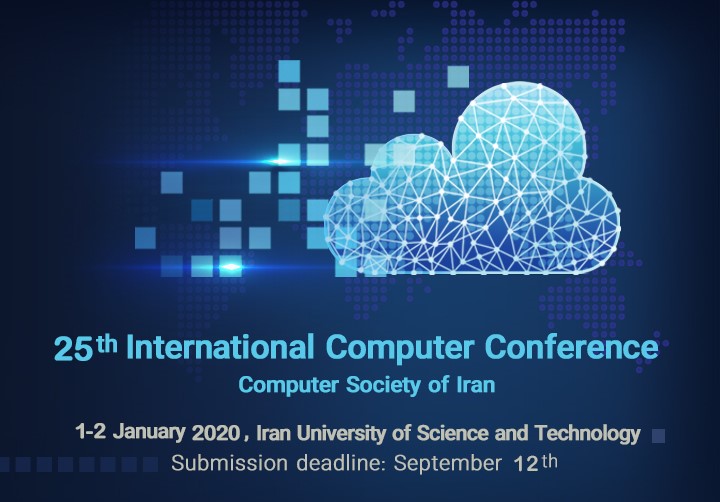publications
Explore my research contributions in artificial intelligence, machine learning, reinforcement learning, and bioinformatics, featured in leading journals and conferences.
2024
- Tissue Engineering
 Application of Artificial Intelligence in Tissue EngineeringReza Bagherpour, Ghasem Bagherpour, and Parvin MohammadiTissue Engineering Part B: Reviews, 2024
Application of Artificial Intelligence in Tissue EngineeringReza Bagherpour, Ghasem Bagherpour, and Parvin MohammadiTissue Engineering Part B: Reviews, 2024Tissue engineering, a crucial approach in medical research and clinical applications, aims to regenerate damaged organs. By combining stem cells, biochemical factors, and biomaterials, it encounters challenges in designing complex 3D structures. Artificial intelligence (AI) enhances tissue engineering through computational modeling, biomaterial design, cell culture optimization, and personalized medicine. This review explores AI applications in organ tissue engineering (bone, heart, nerve, skin, cartilage), employing various machine learning (ML) algorithms for data analysis, prediction, and optimization. Each section discusses common ML algorithms and specific applications, emphasizing the potential and challenges in advancing regenerative therapies.
@article{Reza2024, title = {Application of Artificial Intelligence in Tissue Engineering}, author = {Bagherpour, Reza and Bagherpour, Ghasem and Mohammadi, Parvin}, journal = {Tissue Engineering Part B: Reviews}, year = {2024}, publisher = {Mary Ann Liebert, Inc., publishers,}, doi = {10.1089/ten.teb.2024.002}, url = {https://www.liebertpub.com/doi/abs/10.1089/ten.TEB.2024.0022}, }
2023
- Food Processing
 The Potential Application of Innovative Methods in Neural Networks for Surface Crack Recognition of Unshelled HazelnutAlireza Shojaeian, Hossein Bagherpour, Reza Bagherpour , and 3 more authorsJournal of Food Processing and Preservation, 2023
The Potential Application of Innovative Methods in Neural Networks for Surface Crack Recognition of Unshelled HazelnutAlireza Shojaeian, Hossein Bagherpour, Reza Bagherpour , and 3 more authorsJournal of Food Processing and Preservation, 2023In some countries, most hazelnuts are cracked using semi-industrial or hand-crafted machines and marketed as open-shell. In the process of hazelnut cracking, because of the different sizes and shapes of hazelnuts, many hazelnuts leave the cracking machine in the form of a cracked or closed-shell. The presence of cracked or closed-shell hazelnuts reduces the marketability of the product. Therefore, after the cracking operation, the separation of cracked or closed-shells from whole hazelnuts has largely been conducted by visual inspection, which is time-consuming, labor-intensive, and lacks accuracy. So, the purpose of this study was to use the deep convolutional neural network (DCNN) algorithm to classify hazelnuts into two classes: open-shell and closed-shell or cracked hazelnuts. To compare the proposed method with pretrained DCNN models, three models including ResNet-50, Inception-V3, and VGG-19 were investigated. The results of the proposed model (accuracy of 98% and F1-score of 96.8) showed that the proposed DCNN has good capability in predicting hazelnut classes. Compared with pretrained models, because of the small size and simple architecture of the proposed model, this model can be a good substitute for a complex and large model such as Inception-V3. Overall, the results indicate that crack on the hazelnut surface can be successfully detected automatically, and the proposed DCNN has a high potential to facilitate the development of a hazelnut sorter based on surface crack.
@article{Reza2023, title = {The Potential Application of Innovative Methods in Neural Networks for Surface Crack Recognition of Unshelled Hazelnut}, author = {Shojaeian, Alireza and Bagherpour, Hossein and Bagherpour, Reza and Amiri Parian, Jafar and Fatehi, Farhad and Taghinezhad, Ebrahim}, journal = {Journal of Food Processing and Preservation}, year = {2023}, doi = {10.1155/2023/2177724}, url = {https://ifst.onlinelibrary.wiley.com/doi/full/10.1155/2023/2177724}, }
2021
- Energy Research
 Improving demand‐response scheme in smart grids using reinforcement learningReza Bagherpour, Nasser Mozayani, and Babak BadnavaInternational Journal of Energy Research, 2021
Improving demand‐response scheme in smart grids using reinforcement learningReza Bagherpour, Nasser Mozayani, and Babak BadnavaInternational Journal of Energy Research, 2021With efficient load management, in peak times, customers can reduce their consumption, shift the shiftable loads to proper times or even store the electrical energy in the low prices range. To achieve these effects, the dynamic pricing policy is one of the most effective ways to encourage users to change their consumption patterns. However, because of the uncertainty of electricity consumption, it is a complicated problem to determine an optimal pricing policy. For this purpose, in this study, a deep contextual bandit algorithm is considered to solve this problem, which uses a deep neural network to learns the context and the associated reward. Existing works on dynamic pricing policy used some limited datasets and assumptions, which may be contrary to the nature of the real-world markets. Due to the different demands of the consumers, which change throughout the year, and the existence of multi pricing agents in future markets, it is important to have a good market structure, method, and especially datasets which representative of all possible demands. The simulations were performed in different system models. Results show that the proposed algorithm can improve the system’s reliability, reduce energy cost, and control the power system’s ramp rate. Especially in multiagent markets with multiobjective costs, we can adjust the pricing model based on the market strategy to satisfy customers or reduce energy consumption.
@article{Reza2021, title = {Improving demand‐response scheme in smart grids using reinforcement learning}, author = {Bagherpour, Reza and Mozayani, Nasser and Badnava, Babak}, journal = {International Journal of Energy Research}, year = {2021}, publisher = {John Wiley & Sons, Inc.,}, doi = {10.1002/er.7165}, url = {https://onlinelibrary.wiley.com/doi/abs/10.1002/er.7165}, }
2020
- IEEE Conf
 Optimizing Dynamic Pricing Demand Response Algorithm Using Reinforcement Learning in Smart GridReza Bagherpour, Nasser Mozayani, and Babak Badnava2020
Optimizing Dynamic Pricing Demand Response Algorithm Using Reinforcement Learning in Smart GridReza Bagherpour, Nasser Mozayani, and Babak Badnava2020The emergence of the smart grid has presented new opportunities for demand response to control and reduction of electricity usage. With sufficient energy management, in off-peak times customers can buy and store more electrical energy than on-peak times or shift the shiftable appliance to proper times. These scenarios provide the desired change in the load profile shaping which is the main function of demand response. Dynamic pricing is one of the most effective ways to encourage customers to change their consumption pattern. However, it is difficult to determine an optimal pricing strategy because of the uncertainty of electricity consumption. In this paper, we used NeuralBandit algorithm to solve this problem, which using a neural network that learns the context and the associated reward. Simulation result shows that this proposed algorithm can reduce energy cost, improve reliability of the system and control the ramp rate of the power system.
@article{Reza2020, title = {Optimizing Dynamic Pricing Demand Response Algorithm Using Reinforcement Learning in Smart Grid}, author = {Bagherpour, Reza and Mozayani, Nasser and Badnava, Babak}, conference = {2020 25th International Computer Conference, Computer Society of Iran (CSICC)}, year = {2020}, doi = {10.1109/CSICC49403.2020.9050115}, url = {https://ieeexplore.ieee.org/abstract/document/9050115}, }